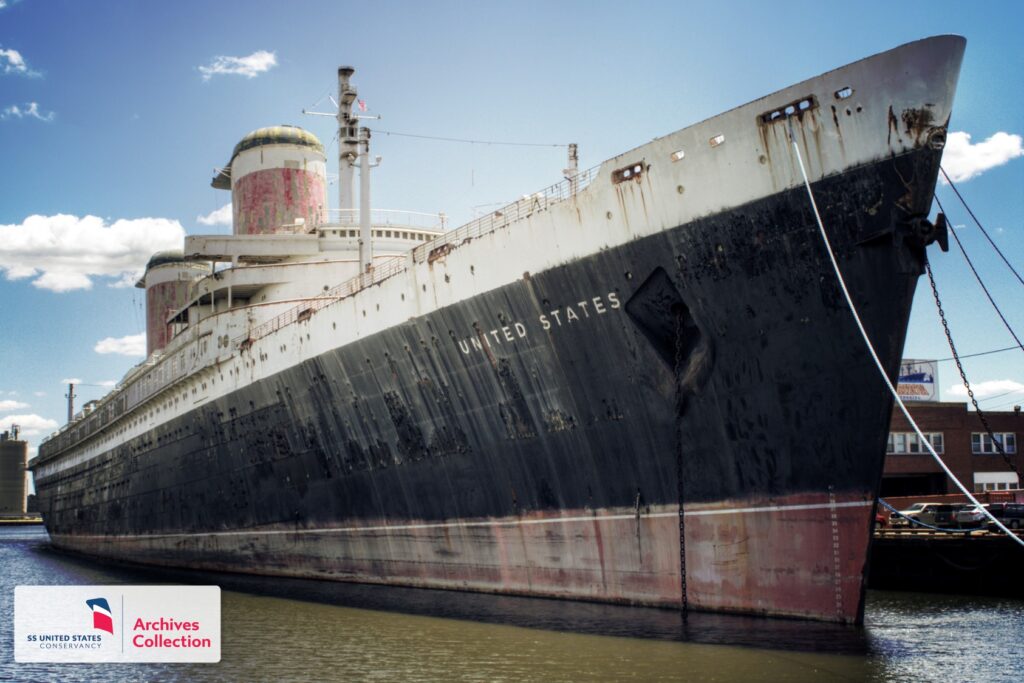The SS United States, once the pride of America’s maritime industry, may soon find itself serving an entirely new purpose beneath the waves. According to an article published on Get the Coast, Okaloosa County in Florida has signed an agreement to purchase the SS United States to create the world’s largest artificial reef off the coast of Destin-Fort Walton Beach.
The proposal has generated significant interest, not only among local stakeholders but also among marine conservationists, divers, and maritime historians. Transforming the SS United States into an artificial reef could provide a boost to local tourism, offer a new habitat for marine life, and preserve a piece of nautical history in a unique way. However, the journey from a celebrated ocean liner to an underwater attraction is fraught with challenges, both logistical and financial.

The SS United States: A Legacy in Decline
The SS United States, launched in 1952, was the fastest ocean liner ever built and remains a symbol of American ingenuity and ambition. Designed by William Francis Gibbs, the ship set transatlantic speed records that still stand today. At over 990 feet long and capable of reaching speeds of 38 knots, the vessel was both a technological marvel and a luxurious passenger experience. It transported celebrities, dignitaries, and ordinary travelers between New York and Europe in record time.
However, the rise of air travel in the late 20th century diminished the demand for ocean liners, and the SS United States was retired from service in 1969. Since then, the ship has changed hands multiple times, enduring a slow decline marked by periods of neglect, unsuccessful redevelopment plans, and increasing costs for preservation efforts.
The Artificial Reef Proposal
Now, Okaloosa County is considering a bold plan to give the SS United States a new lease on life as an artificial reef. The concept of turning decommissioned vessels into artificial reefs is not new; it has been successfully done with other ships, providing new habitats for marine life and serving as popular diving attractions. However, the SS United States is not just any ship; it is a historic vessel with a unique construction that includes a hull made entirely of aluminum and other non-corrosive materials. This construction makes it a particularly appealing candidate for reefing, as it would likely last longer underwater than other ships.

The county believes that scuttling the SS United States off the coast of Destin-Fort Walton Beach could make it a world-class diving destination, attracting tourists from around the globe. Such a move would also help alleviate some of the environmental pressures on natural reefs in the area by providing an alternative site for diving activities. Moreover, the ship’s vast size and historical significance could offer educational and research opportunities, bridging marine biology, history, and environmental science.
Environmental and Economic Benefits
Artificial reefs have been proven to support marine life by providing new habitats for fish, coral, and other marine organisms. The SS United States, with its towering hull and vast decks, could offer a complex structure that promotes biodiversity and becomes a thriving underwater ecosystem. The ship’s materials, primarily aluminum and steel, are less prone to corrosion than other materials, which could result in a more sustainable reef structure over time.
From an economic perspective, creating the world’s largest artificial reef would be a unique selling point for Destin-Fort Walton Beach. The area is already known for its beautiful beaches and vibrant tourism industry. Adding a historic ocean liner as an underwater attraction could further enhance its reputation and attract a niche audience of divers, maritime enthusiasts, and history buffs. The project could generate significant revenue through tourism, diving permits, and related services, potentially offsetting the costs involved in acquiring and preparing the vessel for reefing.
Costs, Timeline, and Challenges Ahead
Despite the potential benefits, there are several challenges that Okaloosa County must address before proceeding with this ambitious plan. The first is financial. According to the article, the Tourist Development Department is requesting approval for a budget allocation of up to $9 million for the acquisition, remediation, transport, and deployment of the SS United States. This project also includes plans for a land-based museum dedicated to the ship. Previous estimates have put these cost in the $25 million to $50 million range.
These expenses include acquiring the ship from its current owners, the SS United States Conservancy, towing the ship from its current location in Philadelphia to the Gulf of Mexico, and extensive preparation to remove any hazardous materials, such as asbestos, oil, and other pollutants that could harm marine ecosystems. The timeline for the project is also a significant consideration. The proposal suggests that it could take anywhere from 18 to 24 months to complete all the necessary preparations and execute the scuttling process off the coast of Destin-Fort Walton Beach.
Additionally, the ship’s current owner, the SS United States Conservancy, has been working for years to preserve and restore the vessel as a stationary museum or mixed-use development. This group, along with maritime historians and preservationists, may have concerns about sinking such a significant piece of American history. They argue that the SS United States represents more than just a rusting hull; it embodies the ingenuity, ambition, and craftsmanship of post-war America.
Environmental considerations also come into play. Preparing a ship for reefing involves removing all hazardous materials, which is both expensive and must be done meticulously to ensure that the scuttling does not result in environmental degradation. Additionally, there are risks involved in sinking a vessel of this size. The process must be carefully managed to ensure the ship lands on the seafloor in the desired position and does not break apart or cause unforeseen damage.
A Crossroads for the SS United States
The fate of the SS United States seems to be sealed, but until agreements are finalized America’s Flagship remains caught between its historic past and an opportunity to serve a new purpose in the future. Okaloosa County’s proposal to transform the ship into an artificial reef represents a creative solution to preserve its legacy while promoting environmental and economic benefits for the region. Yet, the plan faces numerous hurdles, from securing funding and ensuring environmental safety to balancing preservation with practicality.
For now, the SS United States remains docked in Philadelphia, a sleeping giant waiting for its next chapter. Whether that chapter will be written above or below the waves is yet to be determined. What is clear is that this iconic ship continues to capture the imagination of people around the world, symbolizing both a bygone era of ocean travel and the possibilities of innovation and conservation. If the artificial reef project comes to fruition, it would not only be a tribute to the SS United States’ storied past but also a beacon for its future as a vibrant underwater habitat and a testament to adaptive reuse.
